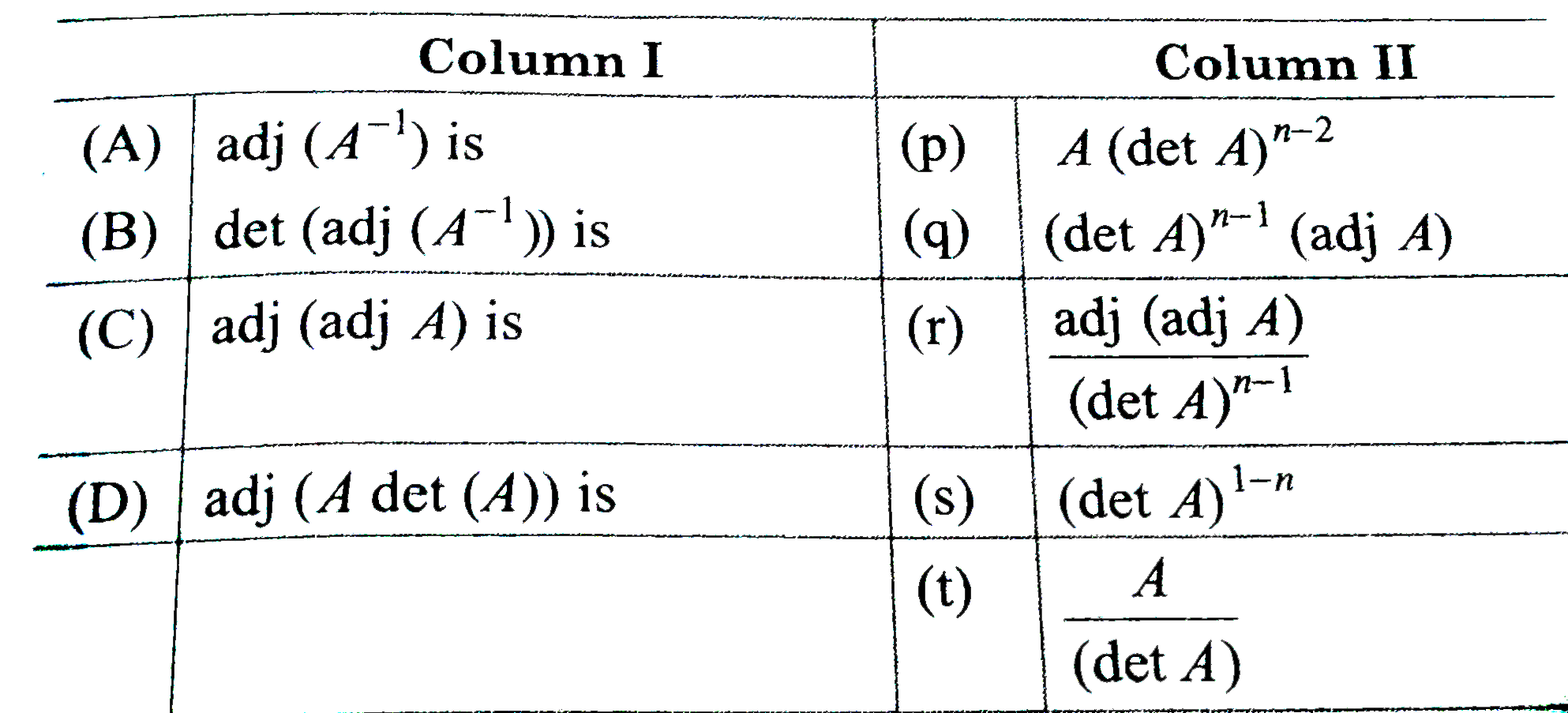Consider the following statements:
I. If A=A. then A is singular matrix where A is the transpose of A.
II. If A is a square matrix such that A3=1, then A is non-singular.
Which of the above statement is/are correct ?
Only I
Only II
Both I and II
Neither I nor II
To solve the problem, we need to analyze the two statements given and determine their validity.
Step 1: Analyze Statement I
Statement I: If AT=A, then A is a singular matrix.
1. Understanding the statement: The statement claims that if a matrix A is equal to its transpose (i.e., A is symmetric), then it must be singular (i.e., its determinant is zero).
2. Counterexample: Consider the identity matrix I. It is symmetric since IT=I, and its determinant is 1, which is not zero. Thus, I is not singular.
3. Conclusion for Statement I: The statement is false because a symmetric matrix can be non-singular.
Step 2: Analyze Statement II
Statement II: If A is a square matrix such that A3=I, then A is non-singular.
1. Understanding the statement: The statement claims that if the cube of a square matrix A equals the identity matrix I, then A must be non-singular.
2. Determinant Analysis: If A3=I, then taking the determinant on both sides gives us:
det(A3)=det(I)
Since det(I)=1, we have:
det(A)3=1
This implies that det(A) can be either 1 or -1 (both of which are non-zero).
3. Conclusion for Statement II: The statement is true because a matrix with a non-zero determinant is non-singular.
Final Conclusion
- Statement I is false.
- Statement II is true.
Thus, the correct answer is that only Statement II is correct.
Summary of the Correct Answer
The correct option is: Only 2.
---
Statement I: If AT=A, then A is a singular matrix.
2. Counterexample: Consider the identity matrix I. It is symmetric since IT=I, and its determinant is 1, which is not zero. Thus, I is not singular.
3. Conclusion for Statement I: The statement is false because a symmetric matrix can be non-singular.
Statement II: If A is a square matrix such that A3=I, then A is non-singular.
2. Determinant Analysis: If A3=I, then taking the determinant on both sides gives us:
det(A3)=det(I)
Since det(I)=1, we have:
det(A)3=1
This implies that det(A) can be either 1 or -1 (both of which are non-zero).
3. Conclusion for Statement II: The statement is true because a matrix with a non-zero determinant is non-singular.
- Statement I is false.
- Statement II is true.
The correct option is: Only 2.
Topper's Solved these Questions
Similar Questions
Knowledge Check
Consider the following statements
1. If A' = A, then A is a singular matrix, where A' is the transpose of A.
2. If A is a square matrix such that A3=I, then A is non-singular.
Which of the statements guven above is/are correct ?A1 onlyB2 onlyCBoth 1 and 2DNeither 1 nor 2If A is a non-singular matrix, then
AA−1 is a non-singular matrix, thenBA−1is skew-symmetric if A is symmetricC∣∣A−1∣∣=|A|D∣∣A−1∣∣=|A|−1Consider the following statements.
I. The inverse of a square matrix, if it exists, is unique.
II. If A and B are singular matrices of order n, then AB is also a singular matrix of order n.
Which of the statements given above is/are correct ?AOnly IBOnly IICBoth I and IIDNeither I nor II
If A is a square matrix such that aij=(i+j)(i−j), then for A to be non-singular the order of the matrix can be .
View SolutionIf A is non-singular matrix of order 3 ,then the rank of A=
View SolutionIf A is non-singular matrix of order, n×n,

View SolutionIf is a non-singular matrix, then det (A1)=
View SolutionIf A is a non-singular matrix, then A(adj.A)=
View Solution